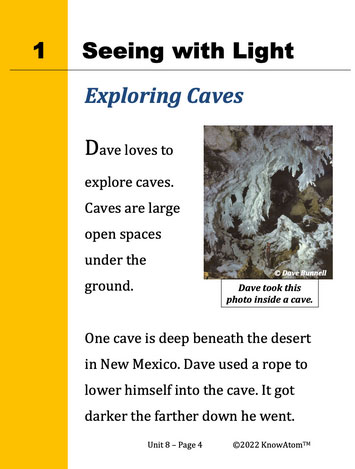Exploring Caves
Dave loves to explore caves. Caves are large open spaces under the ground. One cave is deep beneath the desert in New Mexico. Dave used a rope to lower himself into the cave. It got darker the farther down he went.
Lighting Up Objects
Before long, Dave was surrounded by darkness. He could see only the rope in front of him. He could see headlamps on. the rope because he had a headlamp.
His headlamp lit up whatever was in its beam of light. This light let Dave see the things in front of him. Sight is a sense. It uses the eyes to take in light information about an object’s position, shape, and color.
Seeing in a Cave
We can only see objects when there is light. Caves are dark places. This is because they are underground. Light from the sun doesn’t reach them. When Dave first enters a cave, there is some light. This light is from the sun. The farther he moves into the cave, the darker it gets.






.png?width=296&height=395&name=Screenshot%20(3).png)



